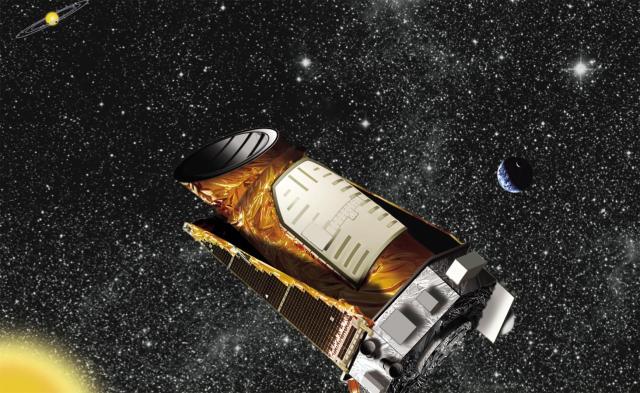Today, NASA announced that the Kepler Spacecraft has been officially retired from its primary mission of looking for Earth-like planets around other stars. Two of the spacecraft’s four reaction wheels–basically gyroscopes that keep it pointed straight–have failed in the past year, and it needs three to maintain the very precise pointing that it needs to look for planets. Kepler was the best method we had to look for Earth-like planets, so it’s unfortunate that the mission has to end like this. This is kind of a “Good News-Bad News” situation, so here’s my take on it.
Bad news: there’s no new planet data coming in. This is the obvious one. The spacecraft can’t look for planets anymore, so we won’t be getting any new information.
Good news: there’s still lots of planets to find in the data. Kepler has only found 135 confirmed planets, but the database it has created contains over 3,500 candidate planets, some of which are believed to be “Earth-like” (that is, a similar size and temperature to Earth). Confirming all (or most) of those planets will keep astronomers busy for years, and there are probably some great finds hiding in there.
Good news: Kepler finished its originally planned mission. Kepler was only intended to look for planets for 3.5 years, and it actually functioned for 4.5 years, so we have more data than we originally planned.
Bad news: we didn’t get as good data as we wanted. It turns out that the accuracy of Kepler’s measurements weren’t quite as good as the engineers intended. Originally, it was thought that 3.5 years of data was enough to find Earth-like planets. However, with the poorer measurements, we needed 7 years to be really sure, which we didn’t get (although there are probably still Earth-like planets in the database).
Good news: Kepler isn’t dead yet. No, it’s not getting better, but there may still be some science that the spacecraft can do with only two reaction wheels, and the mission is still funded through 2016. One possibility is to let the spacecraft drift around the sky and keep an eye out for new variable stars or supernova, which don’t need as much precision to see.
Bad news: this was preventable. If you need three reaction wheels at all times, and you need them to work for several years, how many are you going to include on the spacecraft? Only four? Probably better to go with five or six. Two complete sets would be good.
Bad news: all of the clever plans failed. Engineers actually knew there was a problem with the reaction wheels earlier–not before launch time in 2009, but not long afterward. The Dawn spacecraft, launched in 2007 to study the asteroids Vesta and Ceres, uses the same kind of reaction wheels as Kepler. It’s wheels started acting up in 2010, and two of them have since failed. (Luckily, Dawn can continue its mission with thrusters alone, even if all four wheels fail.) Engineers studying Dawn realized they could make the wheels last longer by spinning them in particular ways to help keep them lubricated. That kept Dawn’s wheels running for quite a while. Unfortunately, Kepler wasn’t so lucky.
So here’s to a great mission. Even with all the problems, we still found a lot of probable planets, so I’m calling it a good run.
Full disclosure: I have a grant from NASA to work on a very peripheral part of the data analysis for Kepler. However, it does not involve the new data that was coming in.

